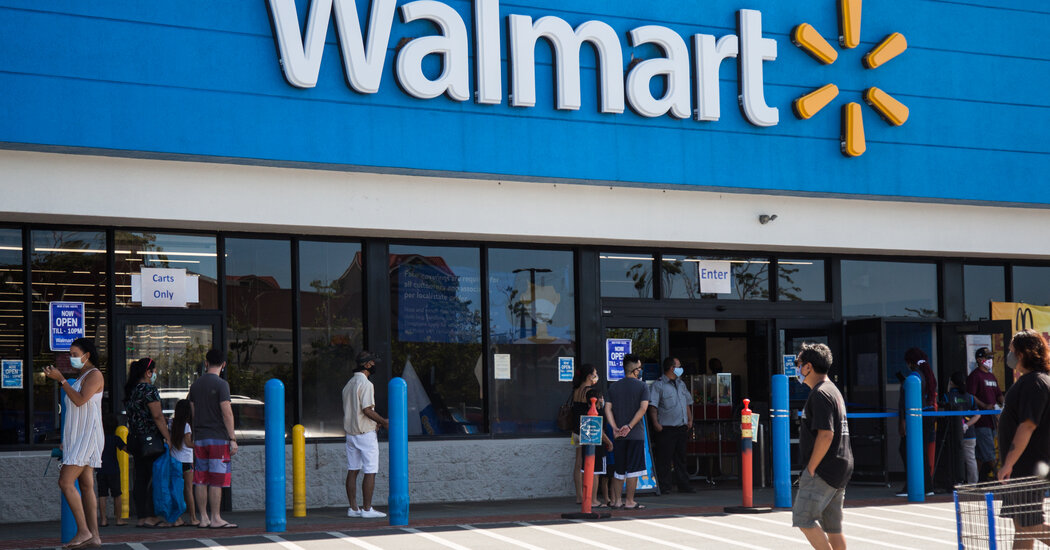
Walmart on Tuesday reported a rise in sales last quarter, signaling that consumers continued to spend despite high inflation and that the retail behemoth had moved past the operational challenges that plagued it earlier this year. It also increased its full-year forecast for revenue and profit, and projected confidence by announcing a $20 billion share buyback.
The retailer’s sales in the United States increased 8.2 percent in the third quarter versus the same period last year, comfortably beating analysts’ estimates. Revenue for the quarter rose to nearly $153 billion, also more than expected.
Walmart’s stock rose more than 6 percent in premarket trading, a sharp move for a company of its size.
Walmart said in August that its customers were feeling the effects of inflation, and changing their shopping habits accordingly. Doug McMillon, the company’s chief executive, said the retailer was adjusting to that reality. As the prices of food and gas increased, shoppers pulled back on discretionary spending for items like clothes and knickknacks for the home. That left Walmart with excess inventory that it had to get rid of at a loss.
“We’re being thoughtful and balanced about inventory levels by category and expenses as we work through the fourth quarter and position ourselves for next year,” Mr. McMillon said on Tuesday on a call with analysts.
Walmart said the overall number of transactions and the average amount a shopper spent per trip in the United States increased in the third quarter, suggesting high inflation did not deter consumers as much as some had feared.
Once a beneficiary of pandemic spending habits, Walmart has more recently looked to reset Wall Street expectations, initially slashing its forecast for annual earnings, only to upgrade it in recent earnings reports. The relatively robust earnings in its latest quarter led Walmart’s executives to raise the company’s full-year profit outlook, saying they now expect profit to fall less sharply and revenue to rise more strongly than before.
Analysts are examining the earnings results closely because they signal how Walmart, the nation’s largest retailer, may fare in the crucial fourth quarter, when holiday shopping kicks into high gear. Analysts are expecting that retailers, which enjoyed bumper profits over the course of the pandemic, will see their margins shrink over the next couple of months, as the cost of labor, transportation and materials continues to rise.
Walmart is also a bellwether for the retail industry, providing a hint at what earnings might look like for Target, Macy’s and others that also report this week.
Americans are feeling more uncertain about the economy this holiday season compared with last year’s. In turn, Walmart, like other retailers, has been testing out ways to capture shoppers’ dollars earlier in the season, by pushing deals ahead of the usual timeline. It has also sweetened the perks for members of its subscription program, including the option to have their returns picked up at their doorsteps. And it has lengthened the window for when all shoppers can return a purchase.
The economic uncertainty has led Walmart to be more conservative in its approach to the holiday season. It said it would hire fewer seasonal workers this year.